Serevent 50 Micrograms Accuhaler
Out of date information, search another(salmeterol xinafoate)
Mouthpiece
Outer case
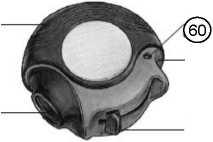
Thumbgrip
Lever
Package Leaflet: Information for the User
Serevent® 50micrograms Accuhaler®
Counter Full Empty
Read all of this leaflet carefully before you start taking this medicine because it contains important information for you.
• Keep this leaflet. You may need to read it again.
• If you have any further questions, ask your doctor or pharmacist.
• This medicine has been prescribed for you only. Do not pass it on to others. It may harm them, even if their signs of illness are the same as yours.
• If you get any side effects, talk to your doctor or pharmacist. This includes any possible side effects not listed in this leaflet. See section 4.
The name of your medicine is Serevent 50micrograms Accuhaler but will be referred to as Serevent Accuhaler or Serevent throughout this leaflet.
In this leaflet:
1 What Serevent Accuhaler is and what it is used for
2 What you need to know before you use Serevent Accuhaler
3 How to use Serevent Accuhaler
4 Possible side effects
5 How to store Serevent Accuhaler
6 Contents of the pack and other information
1 What Serevent Accuhaler is and what it is used for
• Serevent Accuhaler contains the medicine salmetrol. It is a ‘long-acting bronchodilator’. It helps the airways in the lungs to stay open. This makes it easier for air to get in and out. The effects are usually felt within 10 to 20 minutes and last for 12 hours or more.
• The doctor has prescribed it to help prevent breathing problems. These could be caused by asthma. Taking Serevent Accuhaler regularly will help prevent asthma attacks.
This also includes asthma brought on by exercise or at night.
• Taking Serevent Accuhaler regularly will also help prevent breathing problems caused by other chest illnesses such as Chronic Obstructive Pulmonary Disease (COPD).
• Serevent Accuhaler helps to stop breathlessness and wheezing coming on. It does not work once you are breathless or wheezy. If that happens, you need to use a fast acting ‘reliever’ medicine, such as salbutamol.
• Serevent is supplied to you in an inhaler called the Accuhaler. You breathe the medicine directly into your lungs.
If you are being treated for asthma, you should
always be given both a Serevent and a steroid
inhaler to use together.
2 What you need to know before you use Serevent Accuhaler
Do not take Serevent Accuhaler if:
you are allergic (hypersensitive) to salmeterol xinafoate, or to the other ingredient lactose.
Take special care with Serevent Accuhaler
• If you are using Serevent for asthma your doctor will want to regularly check your symptoms.
• If your asthma or breathing gets worse tell your doctor straight away. You may find that you feel more wheezy, your chest feels tight more often or you may need to use more of your fast acting ‘reliever’ medicine. If any of these happen, do not increase your number of puffs of Serevent. Your chest condition may be getting worse and you could become seriously ill. See your doctor as you may need a change in asthma treatment.
• Once your asthma is well controlled your doctor may consider it appropriate to gradually reduce the dose of Serevent.
• If you have been prescribed Serevent for your asthma, continue to use any other asthma medication you are already taking. These could include a steroid inhaler or steroid tablets. Continue taking the same doses as before, unless your doctor tells you otherwise. Do this even if you feel much better. Do not stop taking your steroid inhaler (or any steroid tablets) when you start using Serevent.
• Your doctor may want to check your health regularly if you have an overactive thyroid gland, diabetes mellitus (Serevent may increase your blood sugar) or heart disease, including an irregular or fast heartbeat.
Other medicines and Serevent
• Tell your doctor if you are taking or have recently taken any other medicines. This includes those for asthma or any other medicines obtained without a prescription.
This is because Serevent may not be suitable to be taken with other medicines.
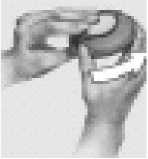
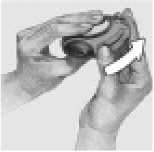
• Inform your doctor before using Serevent if you are currently being treated
for any fungal infections with medicines containing ketoconazole or itraconazole, or if you are being treated for HIV with ritonavir. These medicines may increase the risk of you experiencing side effects with Serevent, including irregular heart beats, or may make side effects worse.
• Beta-blockers should be avoided when taking Serevent, unless your doctor tells you to take them. Beta-blockers, including atenolol, propranolol and sotalol, are mostly used for high blood pressure or other heart conditions. Tell your doctor if you are taking beta-blockers or have recently been prescribed beta-blockers as they may reduce or abolish the effects of salmeterol.
• Serevent can reduce the amount of potassium in your blood. If this happens you may notice an uneven heartbeat, muscle weakness or cramp. This is more likely to happen if you take Serevent with some medicines used to treat high blood pressure (diuretics-water tablets) and other medicines used to treat breathing problems such as theophylline or steroids. Your doctor may ask for you to have blood tests to check the amount of potassium in your blood. If you have any concerns discuss them with your doctor.
Pregnancy and breast-feeding
If you are pregnant or breast-feeding, think you may be pregnant or are planning to have a baby, ask your doctor or pharmacist for advice before taking this medicine.
Driving and using machines
The possible side effects associated with Serevent are unlikely to affect your ability to drive or use machines.
3 How to use Serevent Accu haler
Always use this medicine exactly as your doctor or pharmacist has told you. Check with your doctor or pharmacist if you are not sure.
• If you are being treated for asthma, you should always be given both a Serevent and a steroid inhaler to use together.
• Use Serevent every day, until your doctor advises you to stop.
• You will start to feel your medicine working within the first day of use.
Serevent is for inhalation by mouth only.
Adults and adolescents aged 12 years and older with Asthma
• The usual starting dose is 1 puff twice a day.
• For people with more severe asthma, your doctor may increase your dose to 2 puffs twice a day.
Children with Asthma
• In children aged 4 to 12 the usual dose is 1 puff twice a day.
• Serevent is not recommended for use in children below 4 years of age.
Adults with Chronic Obstructive Pulmonary Disease (COPD) including bronchitis and emphysema
• The usual starting dose is 1 puff twice a day.
• Not applicable for children and adolescents.
Instructions for use
• Your doctor, nurse or pharmacist should show you how to use your inhaler. They should check how you use it from time to time. Not using the Serevent Accuhaler properly or as prescribed may mean that it will not help your asthma or COPD as it should.
• The Serevent Accuhaler device holds blisters containing Serevent as a powder.
• There is a counter on top of the Serevent Accuhaler which tells you how many doses are left. It counts down to 0. The numbers 5 to 0 will appear in red to warn you when there are only a few doses left. Once the counter shows 0, your inhaler is empty.
Using your inhaler
DTo open your Serevent Accuhaler, hold the outer case in one hand and put the thumb of your other hand on the thumbgrip.
Push your thumb away from you as far as it will go.
You will hear a click. This will open a small hole in the mouthpiece.
0Hold your Serevent Accuhaler with the mouthpiece towards you.
You can hold it in either your right or left hand. Slide the lever away from you as far as it will go. You will hear a click.
This places a dose of your medicine in the mouthpiece.
Every time the lever is pushed back a blister is opened inside and the powder made ready for you to inhale. Do not play with the lever as this opens the blisters and wastes medicine.
BHold the Serevent Accuhaler away from your mouth, breathe out as far as is comfortable.
Do not breathe into your Serevent Accuhaler.

4 Possible side effects
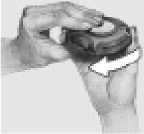
□ Put the mouthpiece to your lips; breathe in steadily and deeply through the Serevent Accuhaler, not through your nose. Remove the Serevent Accuhaler from your mouth.
Hold your breath for about 10 seconds or for as long as is comfortable.
Breathe out slowly.
B Afterwards rinse your mouth with water and spit it out. This may help to stop you getting thrush and being hoarse.
0To close the Serevent Accuhaler, slide the thumbgrip back towards you, as far as it will go. You will hear a click. The lever will return to its original position and is reset.
Your Serevent Accuhaler is now ready for you to use again.
Cleaning your inhaler
Wipe the mouthpiece of the Serevent Accuhaler with a dry tissue to clean it.
If you use more Serevent than you should
It is important to use the inhaler as instructed. If you accidentally take a larger dose than recommended, talk to your doctor or pharmacist. You may notice your heart beating faster than usual and that you feel shaky and/or dizzy. You may also have a headache, muscle weakness and aching joints.
If you forget to use Serevent
Do not take a double dose to make up for a missed dose. Just take your next dose at the usual time.
If you have any further questions on the use of this medicine, ask your doctor or pharmacist.
Like all medicines, this medicine can cause side effects, although not everybody gets them. To reduce the chances of side effects, your doctor will prescribe the lowest dose of Serevent to control your asthma or COPD. These are the side effects reported by people taking Serevent.
Allergic reactions: you may notice your breathing suddenly gets worse after using Serevent. You may be very wheezy and cough. You may also notice itching and swelling (usually of the face, lips, tongue or throat). If you get these effects or they happen suddenly after using Serevent, tell your doctor straight away.
Allergic reactions to Serevent are very rare (they affect less than 1 person in 10,000).
Other side effects are listed below:
Common (affects less than 1 person in 10):
• Muscle cramps
• Feeling shaky; fast or uneven heartbeat (palpitations), headache, shaking hands (tremor). Tremors are more likely if you are taking more than one puff twice daily. These side effects do not last long and happen less as treatment with Serevent continues.
Uncommon (affects less than 1 person in 100):
• Rash
• Very fast heart rate (tachycardia). This is more likely to happen if you are taking more than one puff twice daily
• Feeling nervous.
Rare (affects less than 1 person in 1,000):
• Feeling dizzy
• Being unable to sleep or finding sleep difficult
• A reduction in the amount of potassium in your blood (you may get an uneven heartbeat, muscle weakness, cramp)
Very rare (affects less than 1 person in
10,000):
• Breathing difficulties or wheezing that gets worse straight after taking Serevent. If this happens stop using your Serevent
Accuhaler. Use your fast-acting ‘reliever’ inhaler to help your breathing and tell your doctor straight away
• Uneven heartbeat or your heart gives an extra beat (arrhythmias). If this happens do not stop using Serevent but tell your doctor
• Increases in the amount of sugar (glucose) in your blood (hyperglycaemia). If you have diabetes, more frequent blood sugar monitoring and possibly adjustment of your usual diabetic treatment may be required
• Sore mouth or throat
• Feeling sick (nausea)
• Aching, swollen joints, or chest pain.
Reporting of side effects
If you get any side effects, talk to your doctor, pharmacist or nurse. This includes any possible side effects not listed in this leaflet. You can also report side effects directly via the Yellow Card Scheme at: www.mhra.gov.uk/yellowcard.
By reporting side effects, you can help provide more information on the safety of this medicine.
POM
5 How to store Serevent Accuhaler
• Keep out of the sight and reach of children.
• Do not store above 30°C.
• Store in the original package. Store in a dry place .
• Do not use after the expiry date which is stated on the carton or label after ‘Exp’. The expiry date refers to the last day of that month.
• If your medicine shows any signs of deterioration or discolouration, seek the advice of your pharmacist.
Medicines should not be disposed of via wastewater or household waste. Ask your pharmacist how to dispose of medicines no longer required. These measures will help to protect the environment.
Manufactured by: Glaxo Wellcome Production, Evreux, France.
Procured from within the EU and repackaged by the Product Licence holder: B&S Healthcare, Unit 4, Bradfield Road, Ruislip, Middlesex,
HA4 ONU, UK.
Serevent® 50micrograms Accuhaler® PL: 18799/2016 r
Leaflet date: 28.04.2015
Accuhaler and Serevent are registered trademarks of the GlaxoSmithKline group of companies
6 Contents of the pack and other information
What Serevent Accuhaler contains
• Each actuation contains powder for inhalation, providing 50micrograms of salmeterol (as the xinafoate).
• The other ingredient is lactose monohydrate (which contains milk proteins).
Warning: If you have been told by your doctor that
you have an intolerance to some sugars, contact
your doctor before taking this medicinal product.
What Serevent Accuhaler looks like and
contents of the pack
• Two tone green plastic circular device containing inhalation powder in blisters. The device has a dose counter indicating the number of doses remaining.
• Each dose is pre-dispensed.
• The devices are packed in cartons which hold one Accuhaler containing 60 actuations.
(salmeterol xinafoate) Outer case
Mouthpiece
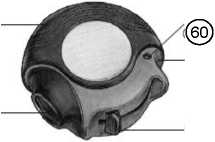
Lever
Thumbgrip
Package Leaflet: Information for the User
Salmeterol 50micrograms powder for inhalation, pre-dispensed
Counter Full Empty
<3>
Read all of this leaflet carefully before you start taking this medicine because it contains important information for you.
• Keep this leaflet. You may need to read it again.
• If you have any further questions, ask your doctor or pharmacist.
• This medicine has been prescribed for you only. Do not pass it on to others. It may harm them, even if their signs of illness are the same as yours.
• If you get any side effects, talk to your doctor or pharmacist. This includes any possible side effects not listed in this leaflet. See section 4.
The name of your medicine is Salmeterol 50micrograms powder for inhalation, pre-dispensed but will be referred to as Salmeterol Accuhaler or Salmeterol or throughout this leaflet. In this leaflet:
1 What Salmeterol Accuhaler is and what it is used for
2 What you need to know before you use Salmeterol Accuhaler
3 How to use Salmeterol Accuhaler
4 Possible side effects
5 How to store Salmeterol Accuhaler
6 Contents of the pack and other information
1 What Salmeterol Accuhaler is and what it is used for
• Salmeterol Accuhaler contains the medicine salmeterol. It is a ‘long-acting bronchodilator’.
It helps the airways in the lungs to stay open. This makes it easier for air to get in and out. The effects are usually felt within 10 to 20 minutes and last for 12 hours or more.
• The doctor has prescribed it to help prevent breathing problems. These could be caused by asthma. Taking Salmeterol Accuhaler regularly will help prevent asthma attacks.
This also includes asthma brought on by exercise or at night.
• Taking Salmeterol Accuhaler regularly will also help prevent breathing problems caused by other chest illnesses such as Chronic Obstructive Pulmonary Disease (COPD).
• Salmeterol Accuhaler helps to stop breathlessness and wheezing coming on. It does not work once you are breathless or wheezy. If that happens, you need to use a fast-acting ‘reliever’ medicine, such as salbutamol.
• Salmeterol is supplied to you in an inhaler called the Accuhaler. You breathe the medicine directly into your lungs.
If you are being treated for asthma, you should
always be given both a Salmeterol and a
steroid inhaler to use together.
2 What you need to know before you use Salmeterol Accuhaler
Do not take Salmeterol Accuhaler if:
you are allergic (hypersensitive) to salmeterol
xinafoate, or to the other ingredient lactose.
Take special care with Salmeterol Accuhaler
• If you are using Salmeterol for asthma your doctor will want to regularly check your symptoms.
• If your asthma or breathing gets worse tell your doctor straight away. You may find that you feel more wheezy, your chest feels tight more often or you may need to use more of your fast-acting ‘reliever’ medicine. If any of these happen, do not increase your number of puffs of Salmeterol. Your chest condition may be getting worse and you could become seriously ill. See your doctor as you may need a change in asthma treatment.
• Once your asthma is well controlled your doctor may consider it appropriate to gradually reduce the dose of Salmeterol.
• If you have been prescribed Salmeterol for your asthma, continue to use any other asthma medication you are already taking. These could include a steroid inhaler or steroid tablets. Continue taking the same doses as before, unless your doctor tells you otherwise. Do this even if you feel much better. Do not stop taking your steroid inhaler (or any steroid tablets) when you start using Salmeterol.
• Your doctor may want to check your health regularly if you have an overactive thyroid gland, diabetes mellitus (Salmeterol may increase your blood sugar) or heart disease, including an irregular or fast heartbeat.
D

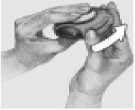
Other medicines and Salmeterol
• Tell your doctor if you are taking or have recently taken any other medicines. This includes those for asthma or any other medicines obtained without a prescription.
This is because Salmeterol may not be suitable to be taken with other medicines.
• Inform your doctor before using Salmeterol if you are currently being treated for any fungal infections with medicines containing ketoconazole or itraconazole, or if you are being treated for HIV with ritonavir. These medicines may increase the risk of you experiencing side effects with Salmeterol, including irregular heart beats, or may make side-effects worse.
• Beta-blockers should be avoided when taking Salmeterol, unless your doctor tells you to take them. Beta-blockers, including atenolol, propranolol and sotalol, are mostly used for high blood pressure or other heart conditions. Tell your doctor if you are taking beta-blockers or have recently been prescribed beta-blockers as they may reduce or abolish the effects of salmeterol.
• Salmeterol can reduce the amount of potassium in your blood. If this happens you may notice an uneven heartbeat, muscle weakness or cramp. This is more likely to happen if you take Salmeterol with some medicines used to treat high blood pressure (diuretics - water tablets) and other medicines used to treat breathing problems such as theophylline or steroids. Your doctor may ask for you to have blood tests to check the amount of potassium in your blood. If you have any concerns discuss them with your doctor.
Pregnancy and breast-feeding
If you are pregnant breast-feeding think you may be pregnant or are planning to have a baby, ask your doctor or pharmacist for advice before taking this medicine.
Driving and using machines
The possible side effects associated with Salmeterol are unlikely to affect your ability to drive or use machines.
3 How to use Salmeterol Accuhaler
Always use this medicine exactly as your doctor or
pharmacist has told you. Check with your doctor or
pharmacist if you are not sure.
• If you are being treated for asthma, you should always be given both a Salmeterol and a steroid inhaler to use together.
• Use Salmeterol every day, until your doctor advises you to stop.
• You will start to feel your medicine working within the first day of use.
Salmeterol is for inhalation by mouth only.
Adults and adolescents aged 12 years
and older with Asthma
• The usual starting dose is 1 puff twice a day.
• For people with more severe asthma, your doctor may increase your dose to 2 puffs twice a day.
Children with Asthma
• In children aged 4 to 12 the usual dose is 1 puff twice a day.
• Salmeterol is not recommended for use in children below 4 years of age.
Adults with Chronic Obstructive Pulmonary Disease (COPD) including bronchitis and emphysema
• The usual starting dose is 1 puff twice a day.
• Not applicable for children and adolescents. Instructions for use
• Your doctor, nurse or pharmacist should show you how to use your inhaler. They should check how you use it from time to time. Not using the Salmeterol Accuhaler properly or as prescribed may mean that it will not help your asthma or COPD as it should.
• The Salmeterol Accuhaler device holds blisters containing Salmeterol as a powder.
• There is a counter on top of the Salmeterol Accuhaler which tells you how many doses are left. It counts down to 0. The numbers 5 to 0 will appear in red to warn you when there are only a few doses left. Once the counter shows 0, your inhaler is empty.
Using your inhaler
I To open your Salmeterol Accuhaler, hold the outer case in one hand and put the thumb of your other hand on the thumbgrip. Push your thumb from you as far as it will go.
You will hear a click. This will open a small hole in the mouthpiece.
0Hold your Salmeterol Accuhaler with the mouthpiece towards you. You can hold it in either your right or left hand. Slide the lever away from you as far as it will go. You will hear a click. This places a dose of your medicine in the mouthpiece.




Every time the lever is pushed back a blister is opened inside and the powder made ready for you to inhale. Do not play with the lever as this opens the blisters and wastes medicine.
BHold the Salmeterol Accuhaler away from your mouth, breathe out as far as is comfortable.
Do not breathe into your Salmeterol Accuhaler.
Put the mouthpiece to your lips; breathe in steadily and deeply through the Salmeterol Accuhaler, not through your nose.
Remove the Salmeterol Accuhaler from your mouth.
Hold your breath for about 10 seconds or for as long as is comfortable.
Breathe out slowly.
B Afterwards rinse your mouth with water and spit it out. This may help to stop you getting thrush and being hoarse.
To close the Salmeterol Accuhaler, slide the thumbgrip back towards you, as far as it will go. You will hear a click. The lever will return to its original position and is reset.
Your Salmeterol Accuhaler is now ready for you to use again.
Cleaning your inhaler
Wipe the mouthpiece of the Salmeterol Accuhaler with a dry tissue to clean it.
If you use more Salmeterol than you should
It is important to use the inhaler as instructed. If you accidentally take a larger dose than recommended, talk to your doctor or pharmacist. You may notice your heart beating faster than usual and that you feel shaky and/or dizzy. You may also have a headache, muscle weakness and aching joints.
If you forget to use Salmeterol
Do not take a double dose to make up for a missed dose. Just take your next dose at the usual time.
If you have any further questions on the use of this medicine, ask your doctor or pharmacist.
4 Possible side effects
Like all medicines, this medicine can cause side effects, although not everybody gets them. To reduce the chances of side effects, your doctor will prescribe the lowest dose of Salmeterol to control your asthma or COPD. These are the side effects reported by people taking Salmeterol.
Allergic reactions: you may notice your breathing suddenly gets worse after using Salmeterol. You may be very wheezy and cough. You may also notice itching and swelling (usually of the face, lips, tongue or throat). If you get these effects or they happen suddenly after using Salmeterol, tell your doctor straight away. Allergic reactions to Salmeterol are very rare (they affect less than 1 person in 10,000).
Other side effects are listed below:
Common (affects less than
1 person in 10):
• Muscle cramps
• Feeling shaky; fast or uneven heartbeat (palpitations), headache, shaking hands (tremor). Tremors are more likely if you are taking more than one puff twice daily. These side effects do not last long and happen less as treatment with Salmeterol continues
Uncommon (affects less than
1 person in 100):
• Rash
• Very fast heart rate (tachycardia). This is more likely to happen if you are taking more than one puff twice daily
• Feeling nervous
Rare (affects less than 1 person in 1,000):
• Feeling dizzy
• Being unable to sleep or finding sleep difficult
• A reduction in the amount of potassium in your blood (you may get an uneven heartbeat, muscle weakness, cramp)
Very rare (affects less than 1 person in
10, 000):
• Breathing difficulties or wheezing that gets worse straight after taking Salmeterol. If
this happens stop using your Salmeterol
Accuhaler. Use your fast-acting ‘reliever’ inhaler to help your breathing and tell your doctor straight away
• Uneven heartbeat or your heart gives an extra beat (arrhythmias). If this happens do not stop using Salmeterol but tell your doctor
• Increase in the amount of sugar (glucose) in your blood (hyperglycaemia). If you have diabetes, more frequent blood sugar monitoring and possibly adjustment of your usual diabetic treatment may be required
• Sore mouth or throat
• Feeling sick (nausea)
• Aching, swollen joints, or chest pain
Reporting of side effects
If you get any side effects, talk to your doctor or pharmacist. This includes any possible side effects not listed in this leaflet. You can also report side effects directly via the Yellow Card Scheme at: www.mhra.gov.uk/yellowcard.
By reporting side effects you can help provide more information on the safety of this medicine.
5 How to store Salmeterol Accuhaler
• Keep out of the sight and reach of children.
• Do not store above 30°C.
• Store in the original package. Store in a dry place
• Do not use after the expiry date which is stated on the label and carton.
• If your Salmeterol Accuhaler shows any signs of deterioration seek the advice of your pharmacist.
Medicines should not be disposed of via wastewater or household waste. Ask your pharmacist how to dispose of medicines no longer required. These measures will help to protect the environment.
6 Contents of the pack and other information
What Salmeterol Accuhaler contains
• Each actuation contains powder for inhalation, providing 50micrograms of salmeterol (as the xinafoate).
• The other ingredient is lactose monohydrate (which contains milk proteins).
Warning: If you have been told by your doctor that you have an intolerance to some sugars, contact your doctor before taking this medicinal product
What Salmeterol Accuhaler looks like and contents of the pack
• Two tone green plastic circular device containing inhalation powder in blisters. The device has a dose counter indicating the number of doses remaining.
• Each dose is pre-dispensed.
• The devices are packed in cartons which hold one Accuhaler containing 60 actuations.
Manufactured by: Glaxo Operations UK Ltd, UK.
Procured from within the EU and repackaged by the Product Licence holder: B&S Healthcare, Unit 4, Bradfield Road, Ruislip, Middlesex,
HA4 ONU, UK.
Salmeterol 50micrograms powder for inhalation, pre-dispensed
PL: 18799/2016
POM
Leaflet date: 28.04.2015